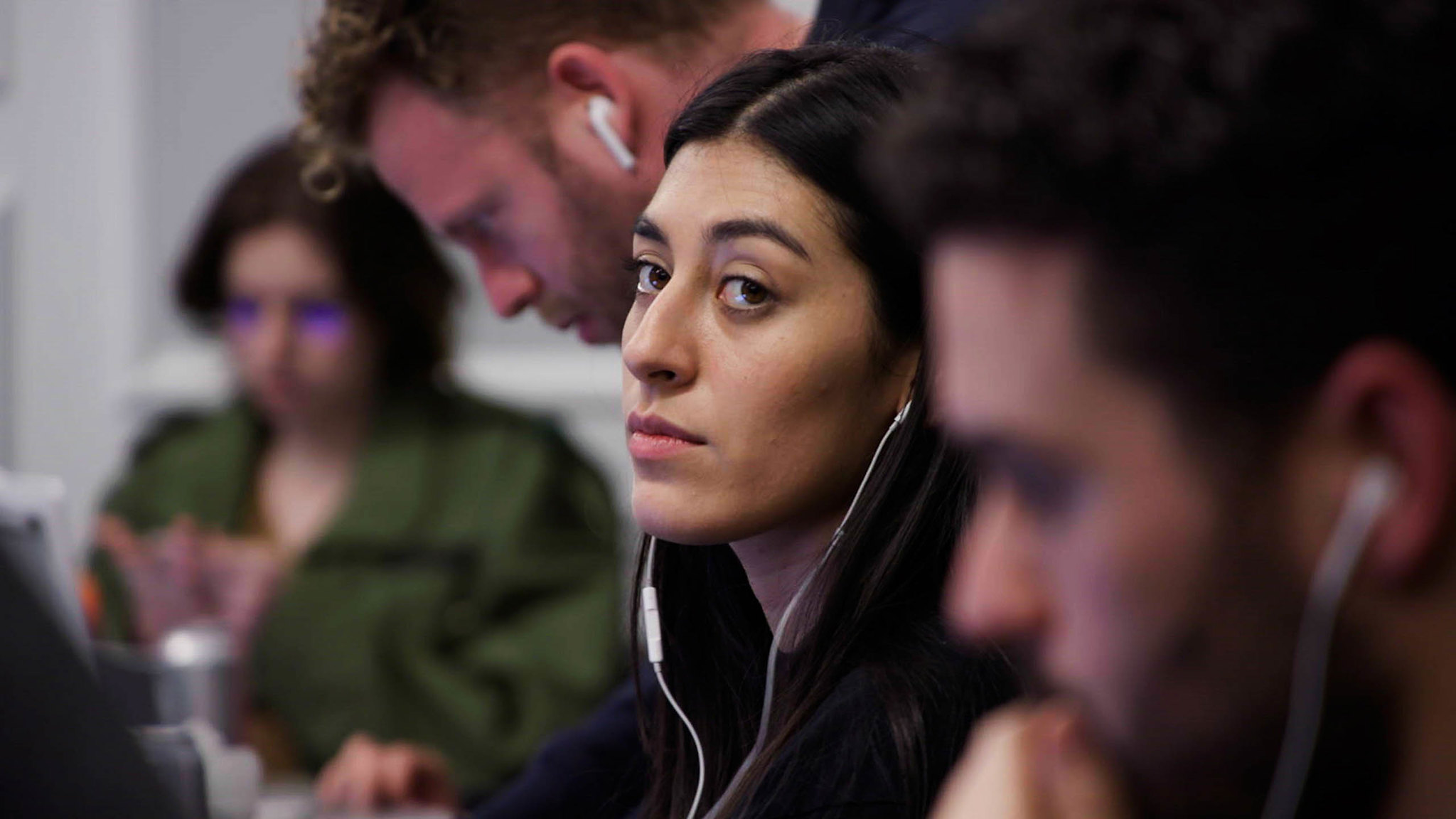To the End
(USA, 103 min.)
Dir. Rachel Lears
Programme: Premieres (World Premiere)
Rachel Lears follows her electrifying 2019 hit Knock Down the House with the timely activist saga To the End. The doc, like her equally of-the-moment audience favourite, follows four young women pushing against the status quo. Where House honed in on four candidates shaking up the 2018 mid-term elections, To the End observes young activists fighting for the Green New Deal. The stakes are urgent and emotions run high as Lears witnesses the activists in action. To the End sticks with them through the COVID-19 pandemic to events of December 2021 as their case gains urgency in a shifting climate. The doc, like House, inevitably preaches to left-leaning audiences. However, it too is a rallying cry for young people to answer the call and fight for the future.
Lears again finds a magnetic character in Alexandria Ocasio-Cortez (aka AOC), the young activist whom she observed in the game-changing election of Knock Down the House. Now an elected representative for her district in New York, AOC brings the same fight that made her such an instantly appealing and invigorating character both in the prior doc and on the campaign trail. It’s refreshing to see her youthful idealism translate into practice, particularly as To the End begins with a throng of youth activists occupying Nancy Pelosi’s office. As they read the reasons for which they fight for their futures, though, nothing happens. Pelosi doesn’t materialise and her minions observe awkwardly. AOC, however, visits the protest, lends her support, and stands in solidarity. Her interest in hearing the young activists’ cases—and fighting for them—seems genuine.
AOC Takes the Lead
AOC’s appearance in To the End is far more than a cameo, which could be the thing that makes or breaks the doc for some audiences. As the most recognizable figure, and the one most comfortable with the camera, To the End feels imbalanced as Lears finds the most compelling narrative in Ocasio-Cortez’s success in transforming the ideals of the Green New Deal into potential policy. Both Knock Down the House and To the End train their eyes more on AOC than they do the other subjects, but there’s a difference here. In the prior doc, the focus was inevitable. AOC’s campaign ignited the most fire throughout the production. That footage was inevitably more compelling. However, the characters were more or less on equal footing going in.
Structurally, To the End doesn’t quite know what to do with the other young women who are along for the ride. What’s more interesting is the tonal shift that comes while following four women in two docs shot mere years apart. Where Knock Down the House leaves one feeling that change is possible, To the End seems hardened. It bears the exhaustion of the Trump years and the COVID years. AOC isn’t the final hope in the fight for a better tomorrow, but she may represent the last generation to inspire change before it’s too late.
Rojas on Fire
The AOC-iest member of the bunch is Alexandra Rojas. She’s 23 years old when the production begins following her as the executive director of Young Democrats. Rojas organizes strategies to inform young Americans about the potential for the Green New Deal. Articulate, informed, and passionate, she has the same hook that AOC offered in Knock Down the House.
There a vulnerability to Rojas that distinguishes her from her co-stars. As a CNN correspondent, she has valuable face time to and a major platform for their campaign. However, she struggles during some of her on-camera appearances, in one case failing to find the comeback for a correspondent who steamrolls her or, in another, refusing to hide her frustrating when Anderson Cooper limits her to one soundbite because she says what folks don’t want to hear. Off the network cameras but before Lears’ verité camera, Rojas is relaxed, sharp, and comfortable. As she reassess what she could have said but didn’t, Lears captures a clear through line for To the End: the people willing to confront climate change are very young and inexperienced. However, they have the passion required to push for change.
Gunn-Wright and Prakash
Rhiana Gunn-Wright, similarly, gives some fire to To the End as one a co-author of the Green New Deal. The Director of Climate Policy at the Roosevelt Institute, she brings informed reasoning and sound judgment. However, she faces a struggle within her group as participants call out the increasingly obvious fact that the Green New Deal is becoming a campaign point amid the Democratic primaries. Gunn-Wright articulates a point that many of her co-stars echo: all they can do is try, especially if another four years of Donald Trump threaten both the American economy and the global climate.
Varshini Prakash, meanwhile, brings a perspective as the executive director and co-founder of the Sunrise Movement. Prakash leads a field of young activists who harness the Green New Deal’s message to fight climate change through economic growth and job creation. As Prakash joins Bernie Sanders on the campaign trail, the doc offers a more inclusive look beyond the “Bernie Bros” who divided the left in 2016. In addition to following her behind the scenes, To the End observes campaign meetings and on-the-ground efforts as young activists passionately repeat the talking points to older working class Americans on the ground.
These scenes, refreshingly idealist as they are, reveal competing priories driven by circumstances. Few of the young people in the campaigns have families to feed. For this generation, though, starting a family is an increasingly unlikely possibility.
Is the End Inevitable?
The doc, particularly as it lurches through the inevitable COVID cut, assumes the same burden that these young people face. There’s a lot to confront and they need to overhaul multiple systems that collapsed at the same time. Even AOC faces the Herculean task of shifting the ideal into the real when the Biden administration taps her to assist with the Build Back Better plan. As AOC translate ideas from the Green New Deal into the modest Biden policy, the film finds a worthy foil in Senator Joe Manchin. The Democrat from West Virginia embodies the milquetoast centrism that the young protagonists of To the End need to overcome. Manchin enjoys his power as the swing vote of a split Senate. He uses the spotlight to stoke divisions, rather than debate the merits of effective policy.
These storylines witness the Movement’s dilemma: how does one generation convince another to adopt environmentally-friendly practices when the latter relies upon the fossil fuel economy for its livelihood—and has completely bought in to the ideology that fuels it? To the End answers the questions of who/what/why/where/when, but the question of how younger generations will combat climate change is more elusive.
To the End illustrates how the greatest challenge the left faces is not in overcoming the challenges from the right, but in awakening so-called progressives who are content with the status quo. It’s a doc without an ending, but the cliffhanger invites audiences to take up the fight.












